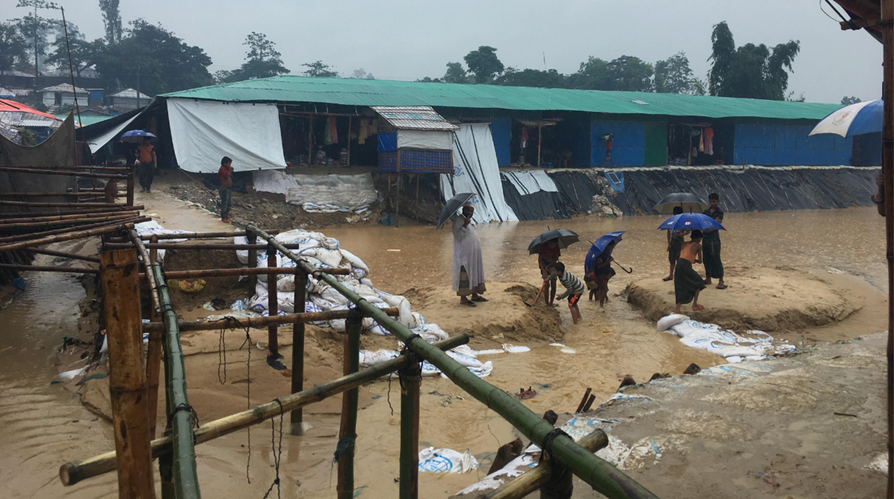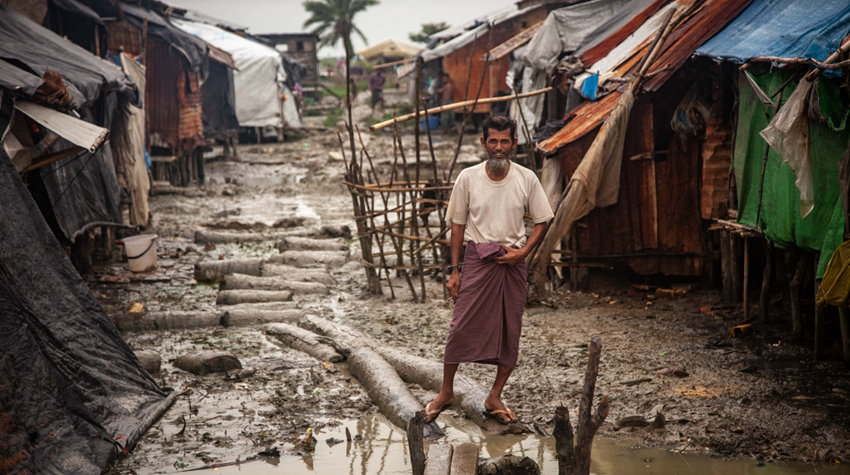If the events of the past two years have taught us anything it’s that few corners of the globe are immune to biological, geological and climate-related hazards. We’ve seen Cyclone Ida slam the United States’ east coast, a volcanic eruption off the coast of Spain and, of course, a global pandemic causing havoc everywhere. But when disaster strikes, it is those living in poverty or dealing with social exclusion who suffer most.
According to the United Nations Office of Disaster Risk Reduction, 193 million people have been impacted by disasters since 2000 and more than 1.2 million killed. Last year alone 31 million people were displaced by disaster. And the most disaster-prone region on earth is the Asia-Pacific, where an individual is 30 times more likely to be affected by disaster than someone living in North America or Europe.
While hazards such as cyclones, drought and bushfires are inevitable, the resulting disastrous loss of life and property can be minimised when communities have the benefit of resilient infrastructure, effective early warning systems, coordinated evacuation and emergency management plans and other disaster risk reduction measures.
Each year on 13 October, the United Nations (UN) marks International Day of Disaster Risk Reduction to promote a global culture of risk awareness and disaster reduction. In 2021, the theme is Only Together which calls for greater international cooperation to help developing countries reduce their disaster risks and losses. Specifically, the UN is asking G20 countries to step up to provide financial, technological and capacity strengthening support to countries that are struggling to cope with rising sea levels, warming seas, erratic rainfall and the constant threat of extreme weather events.
"It has become very clear over the past 12 months that international cooperation to developing countries is not keeping pace with the rise in extreme weather events and the tragic impact of COVID-19," the UN Office for Disaster Risk Reduction said. "International cooperation can have a powerful influence on reducing disaster losses in countries struggling to eradicate poverty."
Australia’s role in disaster risk reduction
The Australian Government ’s Partnerships for Recovery: Australia’s COVID-19 Development Response and Climate Change Action Strategy address the compounding risks posed to the Indo-Pacific, including climate change and COVID-19, and put it firmly on Australia’s foreign policy agenda, recognising our shared interest in strengthening regional stability, prosperity and resilience.
The government-funded Australia Assists program, managed by RedR Australia, directly supports these policies through its humanitarian deployments into disaster-prone countries across the region. Since 2017, the program has deployed 115 specialists to support disaster risk reduction and preparedness in 22 nations – equal to 76 years of professional humanitarian support in four years. Recognising the vulnerability of our nearest neighbours, 72 per cent of those deployees have worked in the Pacific.
As the global pandemic has further increased demand for disaster preparedness capability, the program has deployed 22 specialists into COVID-19-focused roles, such as developing pandemic response plans and national guidelines on infection prevention and control, as well as preparing isolation and quarantine facilities in refugee settings.
Australia Assists is also working to strengthen local capacity to deal with disaster risks through deployments to Pacific government ministries and National Emergency Management Offices and through locally contextualised training. In September 2020, the inaugural Pacific Essentials of Humanitarian Practice course – tailored to the region – provided Pacific Islander humanitarians with the knowledge and skills to support their communities before, during and after crises.
 After only three days of monsoon rain, the main Rohingya refugee camp in Cox's Bazaar, Bangladesh is already flooding. Here people are trying to stabilise the crossing and banks with sandbags. Credit: RedR Australia, 2018.
After only three days of monsoon rain, the main Rohingya refugee camp in Cox's Bazaar, Bangladesh is already flooding. Here people are trying to stabilise the crossing and banks with sandbags. Credit: RedR Australia, 2018.
Disaster risk reduction in action
When devastating floods struck Timor-Leste, one of Australia’s closest neighbours, in April 2021, more than 15 per cent of the population – or 31,000 households – were impacted.
Australia Assists deployee Neil, a Civil Engineering Advisor, had just landed in Dili and worked with Civil Protection staff, helping first responders, assessing the damage, and coordinating the work of UN and NGO partners. Once the initial response phase was over, Neil began looking at a longer term strategy to help the government prevent future flood damage. Neil was an integral part of the Government’s Operations Centre for the flood response, and set up systems to enable good coordination between the government and the international community. He also worked with Civil Protection staff to better understand flood behaviour.
Neil’s insights have helped the Government as they develop plans to relocate some communities to safer locations, where they are less vulnerable to hazards. He also helped Civil Protection to build strong partnerships with the UN and NGOs who are assisting with long-term projects to deal with climate risks.
In Bangladesh, where floods and landslides cause devastating loss and suffering, another Australia Assists deployee Marina, worked with UNHCR to reduce the risk of landslides in the world’s largest and most densely populated refugee camp, Cox’s Bazar, where there are an estimated 884,000 Rohingya.
As well as training local staff in how to best engineer landslide prevention, Marina developed a picture book, “The Mountain that Walks” to teach Rohingya people in the oral tradition, how to identify landslide risks.
In Namibia, where communities suffer through frequent drought and floods, deployee Wojciech worked as a Disaster Risk Reduction Officer with the World Food Programme helping design early warning systems to enable communities to recognise and respond to potential hazards. His work has also resulted in the Namibian government revising its food security programs to better support communities and integrating disaster risk reduction into national legislation and policies.
Neil, Marina and Wojciech’s efforts show that while hazards are inevitable, disaster risks can be reduced when communities are supported to recognise and prepare for the worst.


